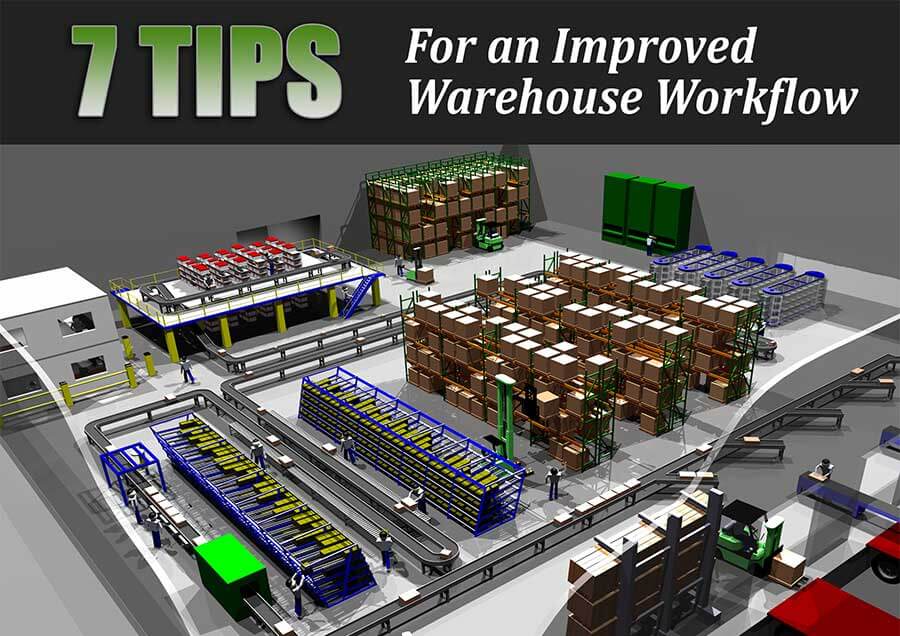
From managing logistics and layout to ensuring optimal safety and efficiency, warehouse workflow is more than just the speed of output. A quality warehouse manager knows how to utilize their best tools to achieve maximum optimization but even the elite need a refresher of best practices to keep things running smooth.
Here’s our list of 7 Tips for an Improved Warehouse Workflow:
1. Laying out the warehouse for optimum space utilization
The most important job of any warehouse manager is to determine how to best use the available floor space to store and move product. Especially in high dollar real estate markets, every inch counts! Ideally, the process begins with a complete drawing of the space including posts, sprinklers, windows, doors and any other architectural fixtures that will have to be taken into account. Then, the warehouse manager must clearly understand the inbound and outbound operations with the goal of maximizing space utilization while also saving time and reducing errors as product is moved in and out of the warehouse.
2. Using the proper type of storage systems
Choosing the proper type of storage system is an essential component of warehouse workflow efficiency. Understanding what is being stored, how much of it is being stored and how often it needs to be accessed will determine the most efficient storage system to use. Factors such as product expiration, temperature requirements and product demand must also be factored into the type of storage system chosen. Storage systems can be mixed and matched to meet the various product rotation needs within the warehouse. The speed and frequency of vehicles (such as forklifts) moving through the warehouse will dictate the durability requirements of any storage system.
3. Picking optimization
Within the warehouse layout, pick routes must be carefully planned. Minimizing travel through the warehouse will result in significant time savings and reduced potential for accidents. No matter how large the warehouse is, the amount of time spent picking product represents a significant part of costs. Organizing pick routes to match pick lists is a great way to reduce going back and forth through the aisles.
4. Properly managing inventory
A surprising number of companies do not know exactly how much inventory they have and exactly where it is stored. It is impossible to run an efficient workflow without this knowledge. More organizations that do a good job of inventory management are adopting lean inventory practices—only storing what is actually needed. The benefits of lean inventory management include time savings and waste reduction which translate to cost savings. Inventory must always be properly labelled to ensure proper counting, storage and retrieval. There are a number of different ways to keep track of inventory, from manual processes to highly automated, integrated systems.
5. Using Technology
While some companies are still using spreadsheets and other manual systems to manage their operations, the vast majority have adopted at least some technology to help them manage their warehouse. There are a plethora of WMS (warehouse management system) options available today that can help you manage standard as well as daily tasks such including labor, inventory, order processing, SKU handling, stock location and more. WMS’s can be standalone systems or part of a full ERP (enterprise resource planning) system. Always make sure WMS modules are linked and integrated to ensure smooth operation of the system as a whole and that users are fully trained on all software systems. Aligning IT and operations for a common understanding of business processes is a must.
6. Keeping the Warehouse Tidy and Orderly
Cluttered and disorderly aisles not only create safety hazards, they greatly impede the ability to move through the warehouse efficiently. Allocating even a little bit of time every day to clearing the aisles will immediately improve workflow. Consider posting SOP’s where appropriate, within the warehouse.
7. Maintaining Health and Safety Best Practices (including training)
Worker safety is of utmost importance to any company. Making sure workers are fully trained to do their jobs before they start doing them is always the best practice. Spending more time training will pay back many times over in not only accident reduction but error reduction as well. Consider cross-training workers to be able to perform more than one type of job so you can keep your operation moving at all times. Provide refresher training to make sure all workers are current in your processes and work standards. Clearly marking travel paths, for forklifts and people, and keeping them clear of clutter is essential to creating a safe work environment. Having proper lighting will reduce potential errors in product picking as well as improve the overall environment for the workers. Posting health and safety rules and regulations where everyone can see them is required by law.
Optimizing warehouse workflow is essential to optimizing profits. As inventory and storage needs change, warehouse design should be revisited and amended as practically as possible.
About the Author: Jeff Howard is the VP of Sales for Advance Storage Products, a structural rack systems manufacturer. Jeff has over 15 years in the material handling industry and holds a BA in Economics from Denison University.



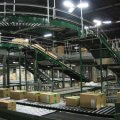
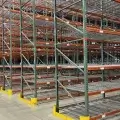
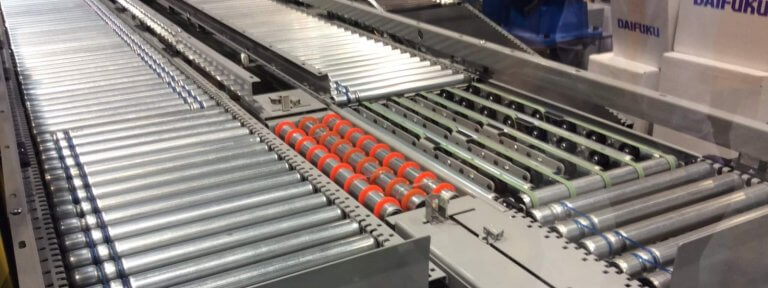



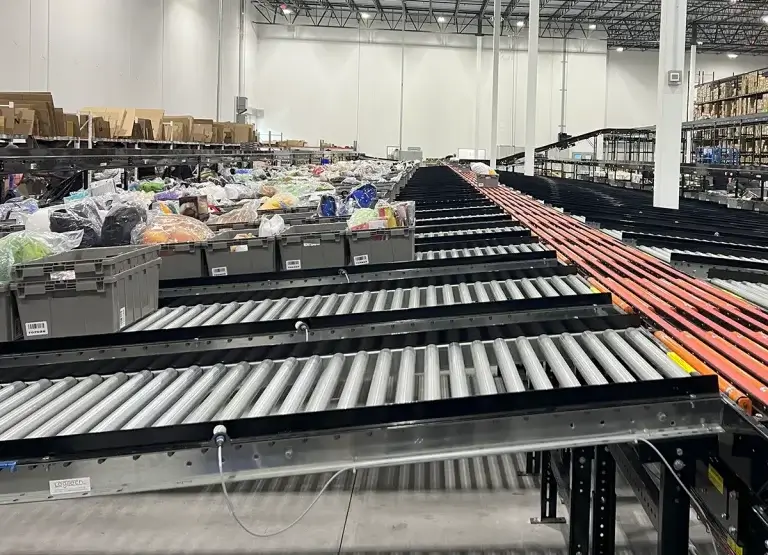

I really like the part where you talked about keeping things tidy and orderly. Just like you stated right here, it is important that the aisles are clear not only to keep the workflow up but also to make sure that there are no hazards in the workplace. I can still remember being in high school when I worked at a factory and because we kept things clean, we were able to work without worrying about anything. Thanks again!
These are really helpful tips. Though the software solutions has minimised the complexity of the job but still Warehouse managers are facing challenges to manage day to day warehouse operations.